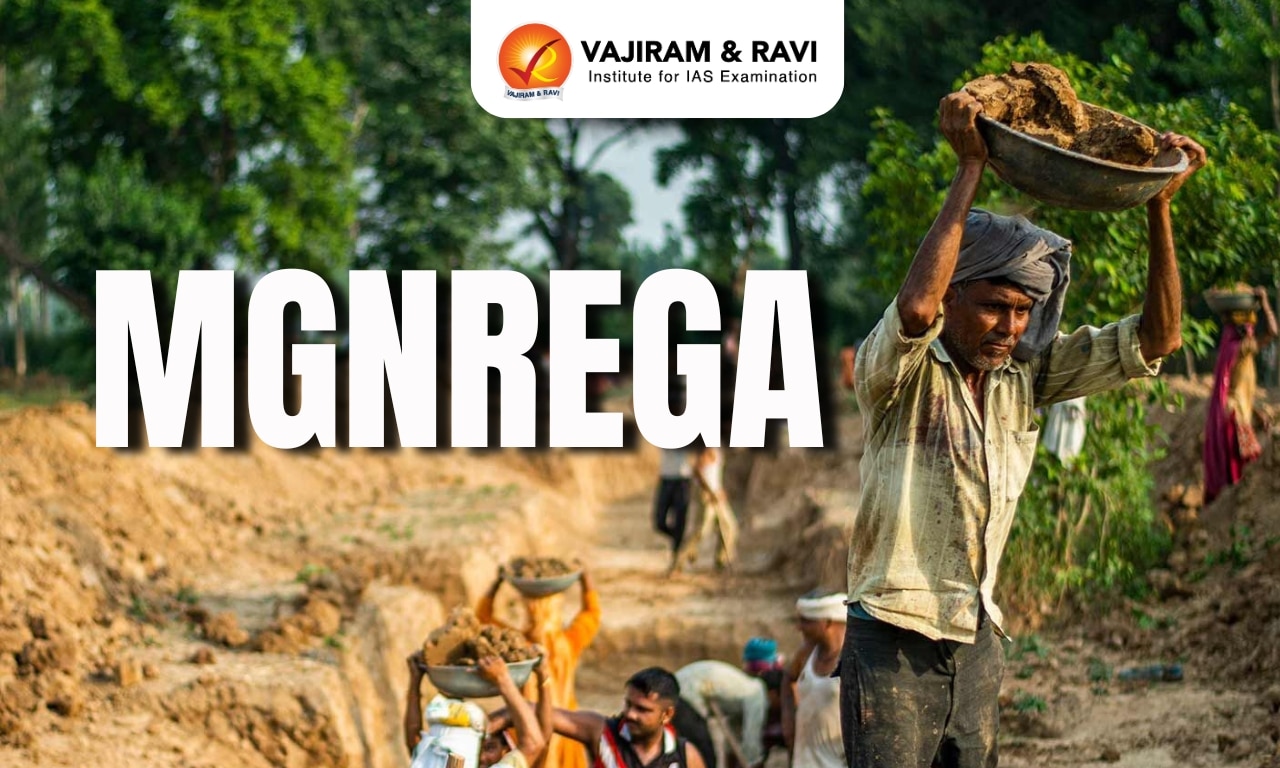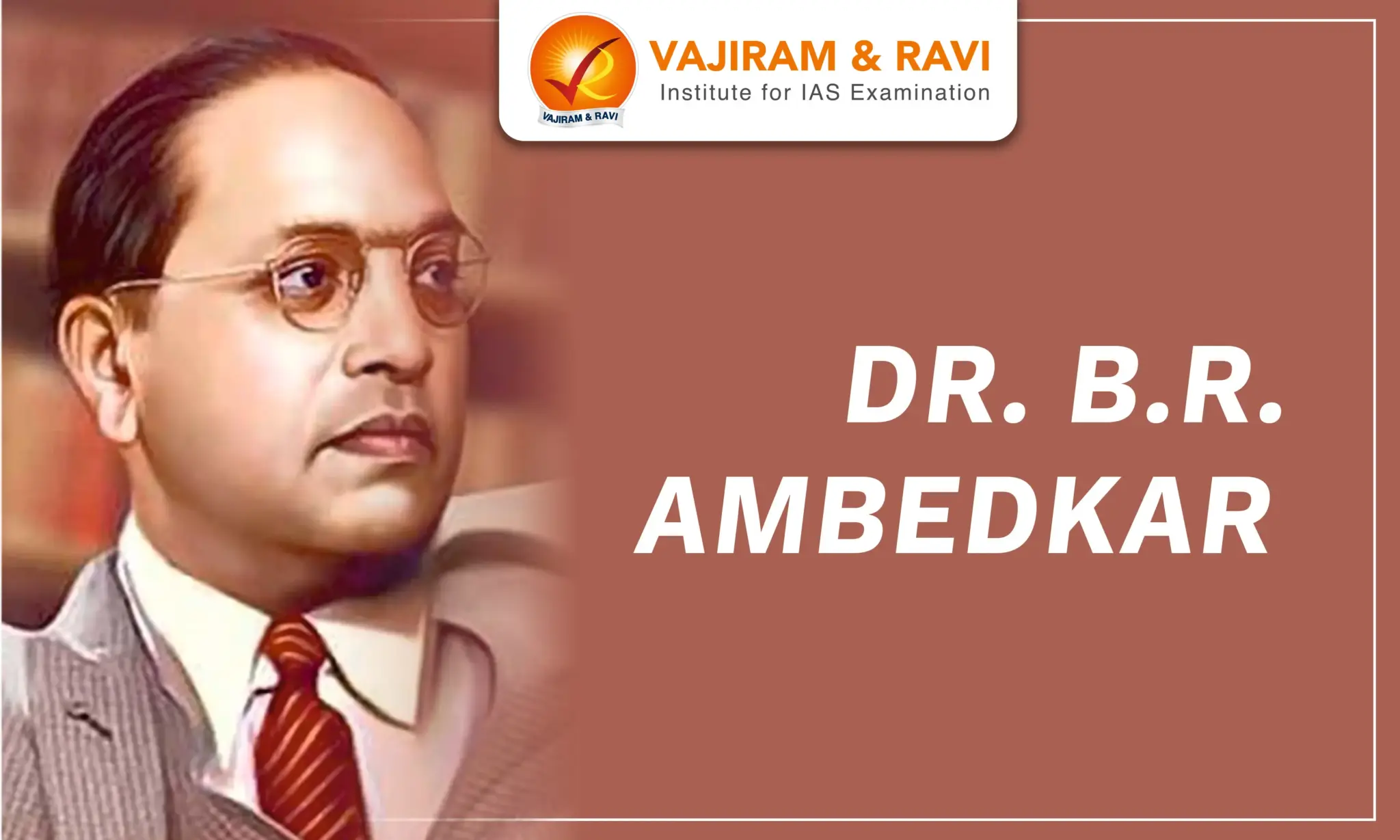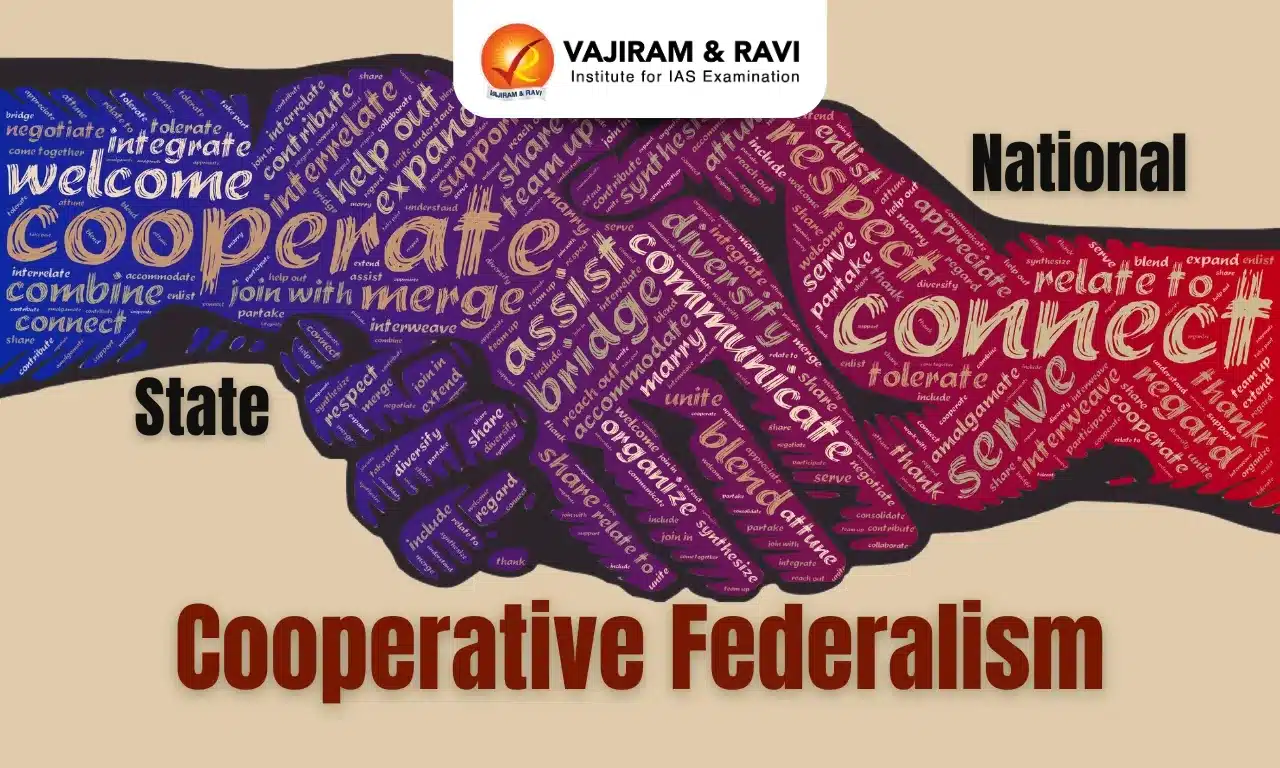What is MGNREGA?
MGNREGA is the abbreviation for the Mahatma Gandhi National Rural Employment Guarantee Act 2005.
- It is a law passed by the Indian government in 2005 that guarantees the "right to work" to rural citizens of India.
- Under this, the government assures a minimum of 100 days of unskilled manual work to an adult member of an eligible rural household.
- The main objective of the MGNREGA is to provide employment to rural citizens and improve their economic conditions.
- Several organizations and people played key roles in championing the cause of the right to work, especially the Mazdoor Kisan Shakti Sangathan (MKSS), renowned development economist Jean Drèze, and many others.
- MKSS’s initial efforts at organizing workers working on government drought relief programmes spearheaded the way for sustained activism that led to the creation of MGNREGA.
What are the key provisions of MGNREGA?
Some of the key features of the MGNREGA Act, 2005 include
- Eligibility Criteria: For receiving the benefits of the MGNREGA Scheme, the following eligibility criteria are to be met by the applicant:
- Citizen of India
- 18 years of age at the time of application
- Rural Household
- Willing to do unskilled work
- Guaranteed Employment: The MGNREGA program guarantees 100 days of unskilled employment to all willing rural citizens, at the government-set minimum wage.
- Unemployment Allowance: If work is not assigned within 15 days, the applicant is entitled to receive an unemployment allowance. This allowance is 1/4 of the minimum wage for the first 30 days and a half for the following period.
- Social Audit: A social audit is a powerful tool for social transformation, community participation, and government accountability. Section 17 of the MGNREGA has mandated a social audit of all the works executed under the MGNREGA.
- Preference of employment near residence: The work provided is usually within a 5 km radius of the applicant's village, with a travel allowance provided for work beyond this radius.
- Decentralized planning: Panchayati Raj Institutions take the lead role in planning, implementing, and monitoring the allocated and executed works. Gram Sabhas are given the authority to suggest work and are required to carry out at least half of the work.
- Implementing agencies are responsible for providing proper working conditions, medical facilities, and compensation.
- Payments are made on a weekly basis and cannot be delayed more than 15 days, with compensation for delays. Complaints can be made and must be addressed within 7 days.
How has MGNREGA evolved over time?
Since 2005, MGNREGA has evolved into a powerful instrument for social protection and rural development in India.
- Data on the scheme’s website shows that on any given day, some 15 million people work under the programme at 1.4 million sites.
- There has been a steady decline in the budget allocation for the scheme. The government cut the spending to Rs 60,000 crore for 2023-24 from Rs 89,400 crore in 2022-23. The budget for the scheme is the lowest in the past two years, which was Rs 98,468 crore and Rs 89,400 crore for the year 2021-22 and 2022-23, respectively.
- In more than 15 years of its implementation, the Act has generated more than 31 billion person days of employment, and the government has spent over Rs 6.4 lakh crore on this demand-driven programme.
- Since 2006, over 30 million water conservation-related assets have been created in the country’s rural areas. This comes to at least 50 water-related structures per village, with the total number of villages in India being 0.6 million, according to Census 2011.
- The scheme has introduced several technological tools, such as online registration, electronic fund transfer, and geotagging through mobile apps to make the implementation more transparent and efficient.
- The National Mobile Monitoring Software (NMMS) App was made mandatory in January 2023. It demands online attendance from employees twice a day
- The scheme has been integrated with other programs such as the National Rural Livelihood Mission (NRLM), the Pradhan Mantri Awas Yojana (PMAY), and the Swachh Bharat Abhiyan to achieve better convergence of resources and efforts.
What is the significance of MGNREGA?
The MGNREGA program aims to provide paid employment opportunities in rural areas.
- Infrastructure: MGNREGA has helped to improve the infrastructure and natural resource base of the rural poor, which has had a positive impact on the environment. The program has also helped to improve the accessibility of basic services in rural areas, such as water, sanitation, and housing.
- Compensating income loss: As per a study conducted by Azim Premji University across four states (Bihar, Karnataka, Maharashtra, and Madhya Pradesh), MGNREGA helped in compensating 20-80% of the income loss incurred because of the Covid-19 induced lockdown.
- Preventing migration to urban areas: The goal is also to decrease migration from rural areas to urban areas by utilizing the untapped labor in rural areas.
- Livelihood: It seeks to improve the livelihoods of the rural poor and create durable assets such as wells, ponds, roads, and canals.
- Right-based approach: Unlike previous employment guarantee schemes, the act aims to combat chronic poverty through a rights-based approach, giving citizens a legal right to work.
- The program incorporates accountability measures to ensure compliance and transparency at all levels.
- MGNREGA best practices:
- Jalpaiguri: Towards blue revolution through MGNREGA by offering a diverse and stable ploy culture system that allows fish farmers to grow vegetables and raise fish at the same time generating livelihood.
- Paschim Bardhaman: Poultry shed through MGNREGA empowering women to earn on their own, mobilizing a huge social capital as well as nutrition for children giving a steady source of income to the family.
- South West Khasi Hills: A group of people from 14 villages through MGNREGA in South West Khasi Hills District came together to create the suspension bridge on the Rilang river to carry their products in the markets of Ranikor.
What are the challenges and issues pertaining to the implementation of MGNREGA?
Some of the challenges associated with the implementation of MGNREGA include
- Corruption: There have been instances of corruption, particularly in the form of embezzlement of funds and manipulation of records. For example, a recent example of an IAS officer in Jharkhand was accused of corruption in MGNREGA.
- Limited job opportunities: MGNREGA provides only 100 days of employment per person per year, which may not be enough to meet the needs of all rural citizens.
- Lack of awareness: Many rural citizens are not aware of their rights under MGNREGA, and as a result, they do not take advantage of the benefits it offers.
- Bureaucratic delays: The program is often bogged down by bureaucratic delays and inefficiencies, making it difficult for citizens to access benefits in a timely manner. For example, delay in payments in Andhra Pradesh.
- Quality of work: Many critics argue that the quality of work carried out under MGNREGA is not up to the mark and the work undertaken is not aligned to the local needs and priorities.
- Limited financial inclusion: Limited financial inclusion in the states such as Bihar is also a challenge for the proper implementation of MGNREGA regarding the transfer of wages.
What are the positive and negative outcomes of MGNREGA?
| Positive outcomes | Negative outcomes |
|
|
|
|
|
|
|
|
|
|
What are the various reforms that can make the MGNREGA programme successful?
Some of the suggestions and way forward include
- Urban MGNREGA: One suggestion related to employment under MGNREGA is to extend the program to urban areas. This can help address the issue of unemployment in urban areas and provide employment opportunities for low-skilled workers.
- Universal Basic Income (UBI) can be a substitute for the MGNREGA as it is more efficient and less leaky than current welfare schemes like MGNREGA.
- Convergence of MGNREGA with other schemes: This can help ensure that MGNREGA projects are aligned with the larger goals of these schemes and can also help improve the sustainability of the projects.
- Innovative measures: Another suggestion is to introduce innovative measures such as using digital platforms for transparency, monitoring, and grievance redressal, linking MGNREGA with the private sector to increase job opportunities, and involving Panchayat Raj Institutions (PRIs) in the implementation of the program.
- Social audit: To improve the implementation of MGNREGA, There is a need to mandatorily hold social audits every six months.
- Job cards: Job cards should be issued to individuals who are eligible for employment under MGNREGA, not to elected PRI representatives and MGNREGA officials.
Last updated on November, 2025
→ Check out the latest UPSC Syllabus 2026 here.
→ Join Vajiram & Ravi’s Interview Guidance Programme for expert help to crack your final UPSC stage.
→ UPSC Mains Result 2025 is now out.
→ UPSC Notification 2026 is scheduled to be released on January 14, 2026.
→ UPSC Calendar 2026 is released on 15th May, 2025.
→ The UPSC Vacancy 2025 were released 1129, out of which 979 were for UPSC CSE and remaining 150 are for UPSC IFoS.
→ UPSC Prelims 2026 will be conducted on 24th May, 2026 & UPSC Mains 2026 will be conducted on 21st August 2026.
→ The UPSC Selection Process is of 3 stages-Prelims, Mains and Interview.
→ UPSC Result 2024 is released with latest UPSC Marksheet 2024. Check Now!
→ UPSC Prelims Result 2025 is out now for the CSE held on 25 May 2025.
→ UPSC Toppers List 2024 is released now. Shakti Dubey is UPSC AIR 1 2024 Topper.
→ UPSC Prelims Question Paper 2025 and Unofficial Prelims Answer Key 2025 are available now.
→ UPSC Mains Question Paper 2025 is out for Essay, GS 1, 2, 3 & GS 4.
→ UPSC Mains Indian Language Question Paper 2025 is now out.
→ UPSC Mains Optional Question Paper 2025 is now out.
→ Also check Best IAS Coaching in Delhi
MGNREGA FAQs
Q1. What is a social audit?+
Q2. What is a Job card?+

















